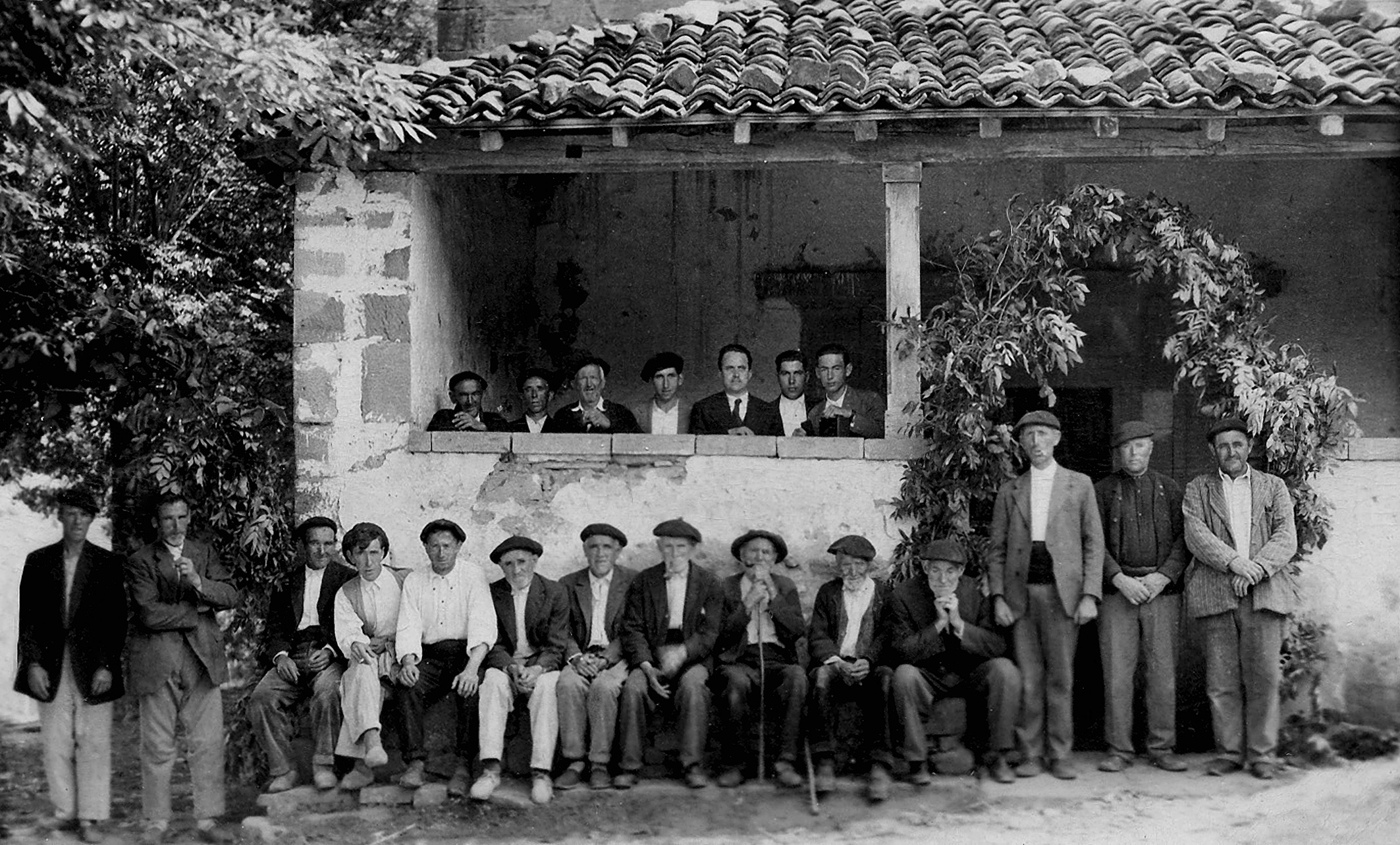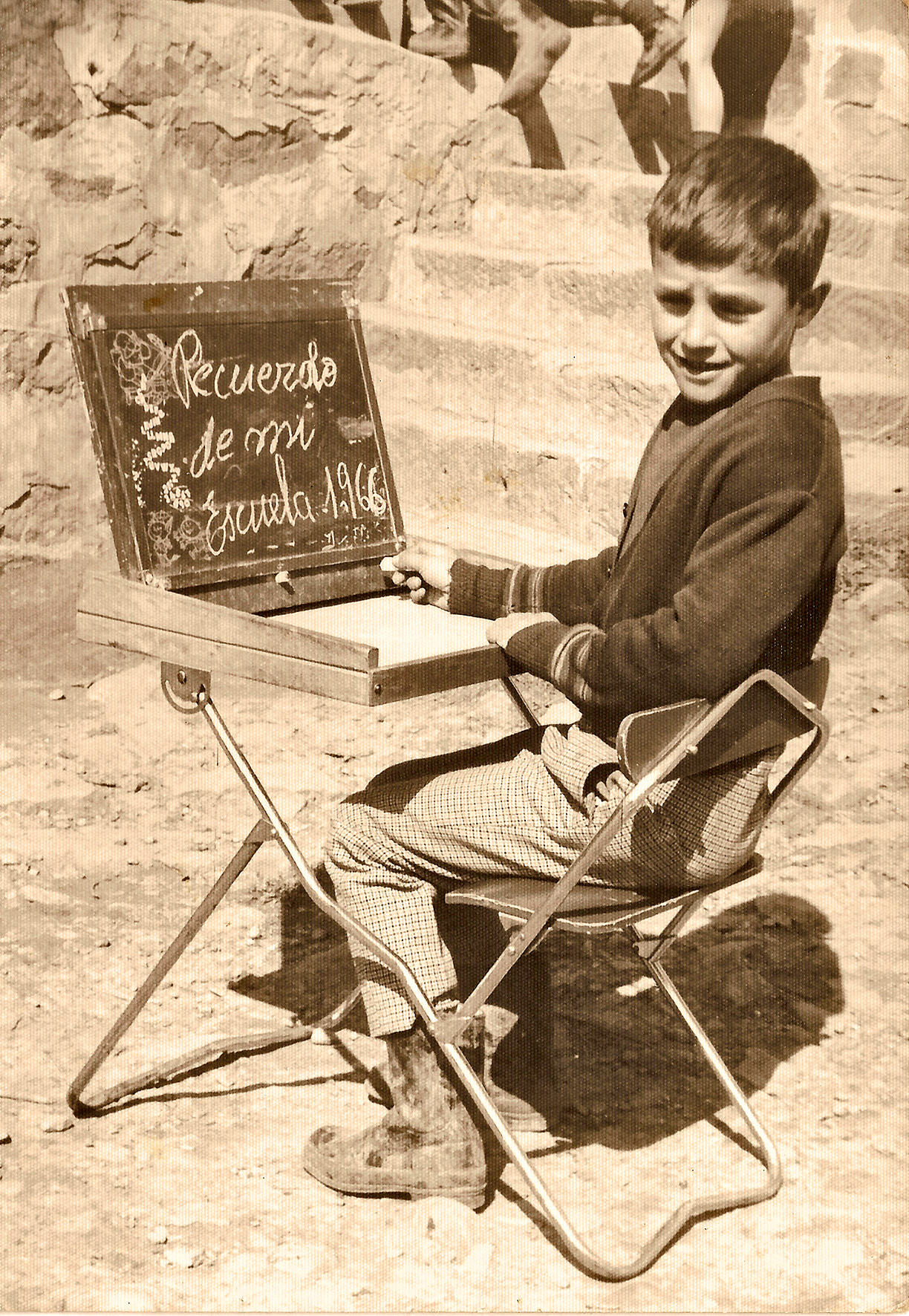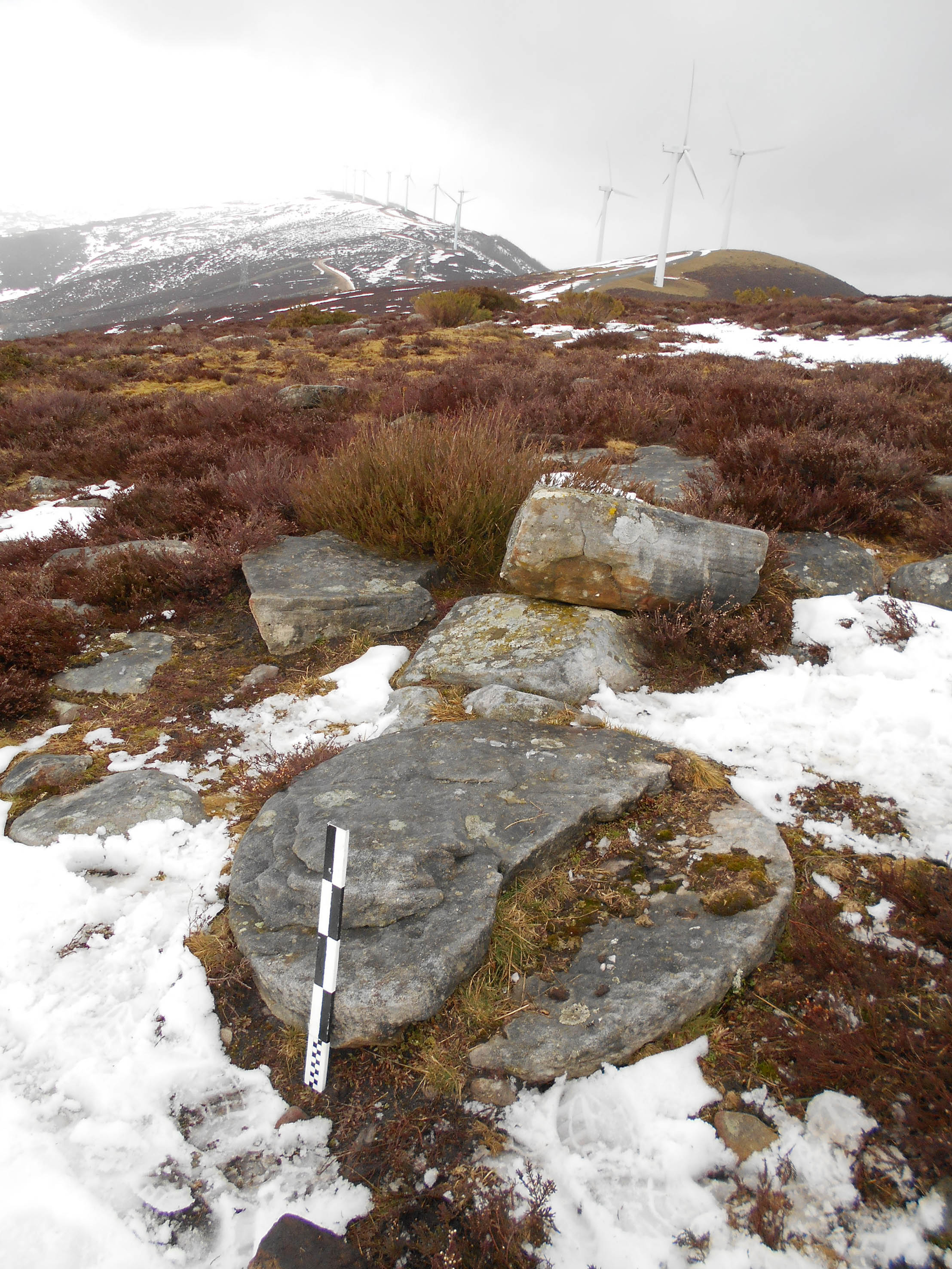Basque ethnography at a glance

Neighbours of Lanzas Agudas, 1934. Courtesy of Miguel Sabino Díaz.
The population of the Valley of Carranza consolidated in the Middle Ages with the formation of primitive councils, so-called concejos, and the government of the republic of Carranza was decided through council meetings. Until 1740, year in which the Valley Assembly House was built in the neighbourhood of Concha, weather permitting, general assemblies were held under a holm oak planted before St Mary’s Church in Soscaño, where the account books were kept. (more…)

School portrait. La Calera del Prado (Valley of Carranza), 1966. Courtesy of Miguel Sabino Díaz.
As a child, I have known elderly folks who could not read or write, though not many, to be honest. When asked to sign a document, they would affix their index fingerprint. Some had attended school for at least enough time to learn the four basic arithmetic operations and write their name, others not as long. Being able to write one’s name had its importance, and a beautiful penmanship with a flourish made it all the more admirable. In the course of my ethnographic researches, I sometimes come across old paper documents passed down from generations before me and see shaky, dubious handwritten signatures with nothing but a simple line under the name. The huge effort made by the signatories may well be perceived. (more…)

A 110-cm-millstone abandoned in Mount Burgamendi (Barrundia). Javi Castro. Aranzadi Science Society.
Stones were vital to mills for grinding grain into flour. Mills themselves are as old as farming. Hand-operated at an early stage, they evolved into more and more sophisticated devices, and their performance improved significantly. Former flour mills were equipped with millstones (errotarriak, in Basque) powered by water (watermill), draught animals (animal-powered mill) or, on fewer occasions, the wind (windmill). Wind farms are found today in some of our mountains, the natural landscape of mountain watersheds having been altered by modern windmills that instead of white flour produce ‘green’ electrical power. (more…)

Preparing the Maypole, 2017. José Ángel Chasco.
Peasants today rely on commercial or mutual insurance for compensation of losses caused by hailstorms. However, ancient rites and charms are still practised to provide protection against the hazard of damage to crops, animals and people. On 3 May, the Finding of the Holy Cross, a Maypole (Mayo, in Spanish) is erected in San Vicente de Arana (Álava) to guard cultivated fields and harvests from the ravages of storms and remains in place throughout the summer until it is taken down on 14 September, the Exaltation of the Holy Cross. (more…)

